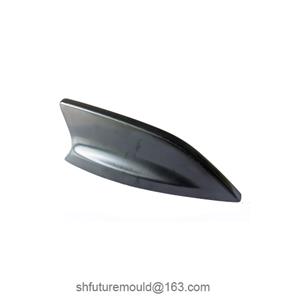Electrical Discharge Machining (EDM) for Injection Molds
Electrical Discharge Machining (EDM) is a specialized manufacturing process that utilizes electrical discharges between two electrodes immersed in a dielectric fluid to erode conductive materials.
I. Fundamental Principles
Electrode Setup: A tool electrode and a workpiece electrode are connected to the two poles of a pulsed power supply and submerged in a dielectric fluid. The tool electrode is controlled by an automatic feed mechanism to maintain a small gap (0.01-0.05mm) between the tool and the workpiece during normal machining.
Discharge Process: When a pulsed voltage is applied between the electrodes, the dielectric fluid at the nearest point between the electrodes breaks down, forming a discharge channel. Due to the small cross-sectional area of the channel and extremely short discharge time, the energy is highly concentrated, resulting in a localized high temperature that melts or vaporizes the material, creating a small cavity.
Iterative Process: After the first discharge pulse, a second pulse is generated after a short interval, breaking down the dielectric at another nearest point. This process repeats at a high frequency, with the tool electrode continuously feeding towards the workpiece, gradually replicating the desired shape on the workpiece.
II. Processing Conditions
Pulsed Power Supply: A pulsed power supply is essential to confine the heat generated by the discharge to a small localized area.
Discharge Gap: A consistent discharge gap between the tool electrode and the workpiece surface is crucial, typically ranging from 1 to 100 micrometers.
Dielectric Fluid: The discharge must occur in a dielectric fluid with sufficient insulating strength. Commonly used fluids include kerosene, deionized water, and emulsions.
III. Characteristics and Applications
Characteristics: Can process any conductive material, regardless of hardness, toughness, brittleness, or purity.
Minimal mechanical forces are applied, making it suitable for low-stiffness workpieces and micro-structures.
Pulse parameters can be adjusted for roughing, semi-finishing, and finishing operations on the same machine.
Production efficiency is lower than traditional machining processes, but the discharge process removes a larger volume of material.
Applications: Primarily used for machining cavities and cores in injection molds.
Particularly suitable for complex surfaces, deep cuts, and high aspect ratio features that are difficult to machine with conventional tools.
- Injection Mold
- Automotive Injection Mold
- Electronics & Electrical Injection Mold
- Consumer Goods Injection Mold
- Airplane Components Injection Mold
- Medical Components Injection Mold
- Irrigation Components Injection Mold
- Injection Molds




